Most people attend a movie theatre because they expect to forget about their lives for a short while and enjoy an amazing experience. Sadly, some theatre performances have become memorable for the wrong reasons.
From devastating fires to ironic on-stage deaths to mass shootings, this article looks back through four centuries of theatre tragedies. It details the events that unfolded in each fateful case and reveals the status of those infamous theatres today.
1. 1606 – The Great Hall, Hampton Court Palace – The first victim of the Macbeth curse?
When King James I spent Christmas 1603 at Hampton Court Palace to escape the ravages of the plague, he was entertained by the King’s Men, an acting company which included a certain William Shakespeare. Prior to the king’s accession, the company (then the Lord Chamberlain’s Men) had put on plays for Queen Elizabeth I, flattering her with plays based around life at the Tudor court.
Unfortunately, the new king found the material uninspiring and too long. Shakespeare decided to write a shorter play and based it in King James’ native Scotland. The play was called ‘Macbeth’ and opened on 7th August 1606. Boy actor Hal Berridge was originally cast as Lady Macbeth but had fallen ill and was unable to perform. Shakespeare allegedly stood in to take the youth’s place. Berridge later died and stories began to circulate about a curse on the play.
Legend has it that the words uttered by the three ‘weird sisters’ were not invented but taken from an existing witch coven’s incantations. The coven was displeased and cursed the play. Whether you believe in curses or not, this is not the only time Macbeth will feature in this list.
While Hampton Court Palace is still very much in existence, the theatre (which had been made permanent in the 18th Century), was removed in the 1800s by James Wyatt.
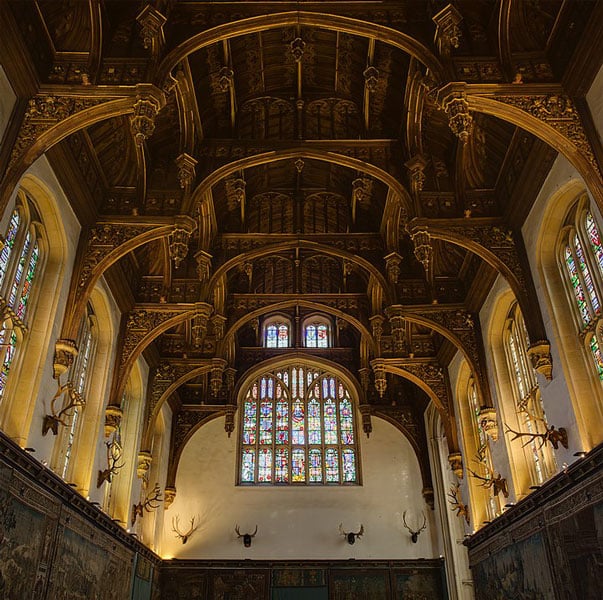
Diliff [CC BY 3.0], via Wikimedia Commons
2. 1673 – Theatre du Palais-Royal – Moliere’s death
Another piece of theatre superstition warns actors against wearing green clothing. Some people believe that the origin of this fear comes from the death of the actor Moliere (born Jean-Baptiste Poquelin) who was wearing green on his deathbed following the fateful fourth performance of his play, Le Malade Imaginaire (The Invisible Invalid).
Moliere was playing the main character, a hypochondriac called Argan, but he was not a well man himself having contracted pulmonary tuberculosis. This may have been from when he spent time in prison for his troupe’s debts.
During the performance, at the Theatre du Palais-Royal, Moliere was seized by a coughing and hemorrhaging fit. He was determined to carry on but an even worse coughing episode led to him collapsing and being taken home to die.
As if that turn of events wasn’t bad enough, two of the three priests who had been invited to read him the last rites refused to attend and a third arrived too late. Under French law, actors were not permitted to be buried in sacred ground but after an appeal by Moliere’s widow, King Louis XIV agreed that Moliere could be buried in a cemetery as long as it was at night.
The Theatre du Palais-Royal, which was originally built in 1641, burnt down in 1763 but was rebuilt and extended seven years later. The second theatre was also destroyed by fire, in 1781, and has never been rebuilt.
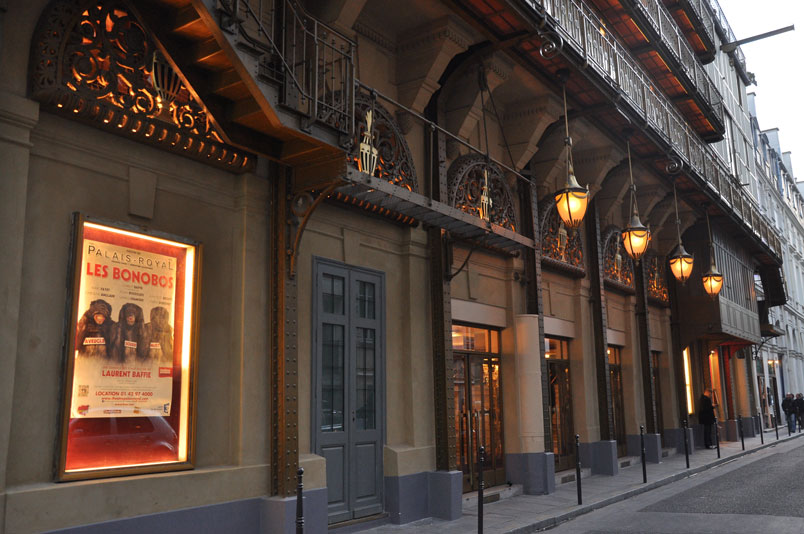
Moonik [CC BY-SA 3.0], via Wikimedia Commons
3. 1845 – An unnamed theatre in Canton, China – The worst theatre fire in history
The Chinese theatres of the 19th Century were very different to those in the West. It was customary for official buildings to be given prominence over all others to give the impression that a town or city valued work and the ruling party over everything else.
In contrast, theatres were very basic featuring wooden benches, flagstone floors and walls made from bamboo interwoven with mats. There was no set or scenery. Actors, who were invariably masters of their craft, would portray scenery through their movements and simple props.
Nevertheless, theatre performances attracted a huge following and, on one tragic day in May 1845, 3,000 people crammed into a theater in Canton (now called Guangzhou) to watch a play honoring the war god Guan Yu. As an actor left the building, a gust of wind blew mats towards an open fire which had been representing a temple to Guan Yu.
Once the mats were alight, it didn’t take long for the whole building to be in flames. A handful of people made it to the single exit before the doors became too hot to use. Despite the efforts of people to dowse the doorway with buckets of water and hoses, 1,670 people died in total and the theatre was totally destroyed.
4. 1865 – Ford’s Theatre, Washington D.C. – Lincoln’s assassination
Abraham Lincoln had a fascination for the works of Shakespeare and was especially drawn to Macbeth. He would carry a copy on his person and regularly quote from it to friends. The ravages of the American Civil War had weighed on his mind and he had been reading aloud from the play as he returned to Washington D.C. on the steamer River Queen in April 1865. In particular, he had been focusing on the lines:
‘Duncan is in his grave;
After life’s fitful fever he sleeps well;
Treason has done his worst: nor steel, nor poison,
Malice domestic, foreign levy, nothing
Can touch him further.’
On his return to the capital, Lincoln attended a performance of Our American Cousin at Ford’s Theatre and most Americans know what happened next. Actor and Confederacy sympathizer John Wilkes Booth fatally shot the president in the back of the head as he watched the play from the Presidents’ Box.
In the years following the assassination, the government appropriated the theatre and it was turned over to the military. In 1893, 22 clerks were killed when part of the theatre collapsed and the building went on to become a warehouse and a museum.
Since 2009, the Ford’s Theatre has been showing theatrical performances again but the Presidents’ Box is never occupied.
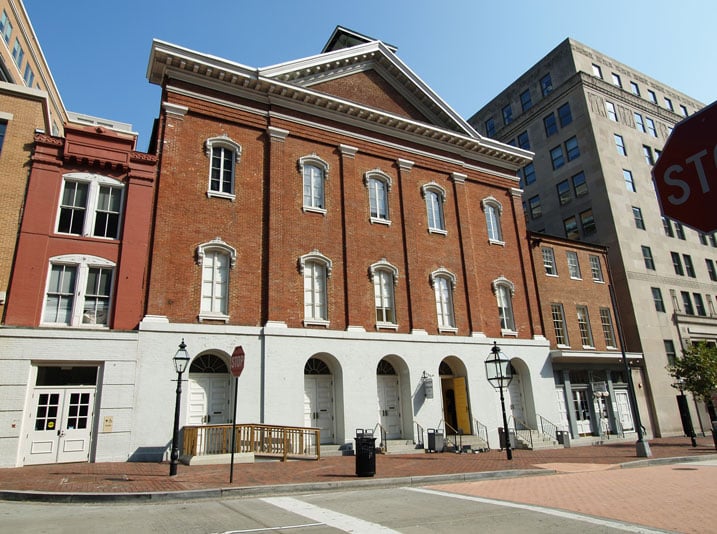
5. 1979 – Riverfront Coliseum, Cincinnati – The Who festival crush
So-called ‘festival seating’ had been a contentious issue in Cincinnati for some time before it claimed the lives of 11 young people on a cold evening in December 1979. The venue was the Riverfront Coliseum and UK band ‘The Who’ were mid-way through the US portion of their world tour.
In total, more than 18,000 tickets had been sold, over 14,000 of them non-reserved general admission or ‘festival seating.’ As seats were available on a ‘first-come, first-served’ basis, by 5pm there was already a large crowd outside the two banks of eight glass doors at the Coliseum’s entrance. Besides, a radio station had announced that general admission ticket holders would be permitted entry from 3pm.
When the ticket-holders heard the band’s music at 7.30pm, either a late soundcheck or pre-show film clips, they thought they had started ahead of their scheduled 8pm start time and began to push forward. With only two doors open at first, people became crushed against the glass. Eventually, extra doors were opened and some even shattered but the pressure from the crowd was too great.
Eleven people between the ages of 15 and 27 died from compressive asphyxiation with a further 26 reporting injuries. This made The Who concert disaster the worst such tragedy up to that point.
In 1997, the Coliseum was renamed The Crown and then, two year’s later, the Firstar Center, becoming the US Bank Arena when those banks merged in 2002. In August 2019, President Trump used the arena when in Cincinnati for a campaign rally.
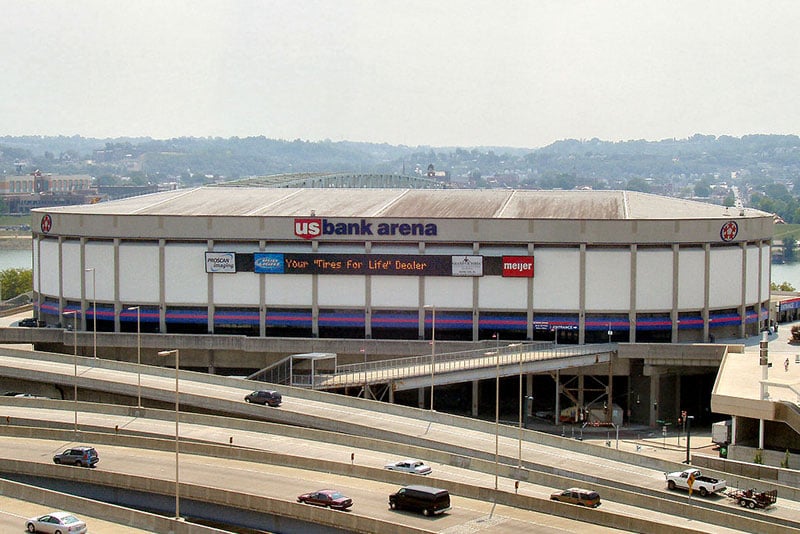
6. 1984 – Her Majesty’s Theatre, London – On-stage death of a comedy legend
When legendary Welsh comedian Tommy Cooper arrived at Her Majesty’s Theatre on April 15th 1984, ahead of a routine stand-up performance for Live from Her Majesty’s, no one realized quite how unwell he was.
Cooper’s routine was characterized by prop comedy and failed magic tricks and he would regularly improvise on the scripted material. That night he was performing the magic cloak skit which consisted of him producing a series of items from behind a cloak. Compere Jimmy Tarbuck was passing the items to Cooper from behind the curtain and the gag was supposed to end with Tarbuck complaining that he couldn’t get the stepladder through Cooper’s legs. Instead, Cooper fell to his haunches with the audience erupting into laughter. Tarbuck initially thought that Cooper was improvising before realizing something was badly wrong. In fact, he had suffered a massive heart attack and died before arriving at Westminster Hospital.
Her Majesty’s Theatre is in London’s West End theatre district. Originally built in 1705, the venue has been rebuilt three times. The current building opened in 1897 and took on its current name in 1952 on the accession of Queen Elizabeth II.
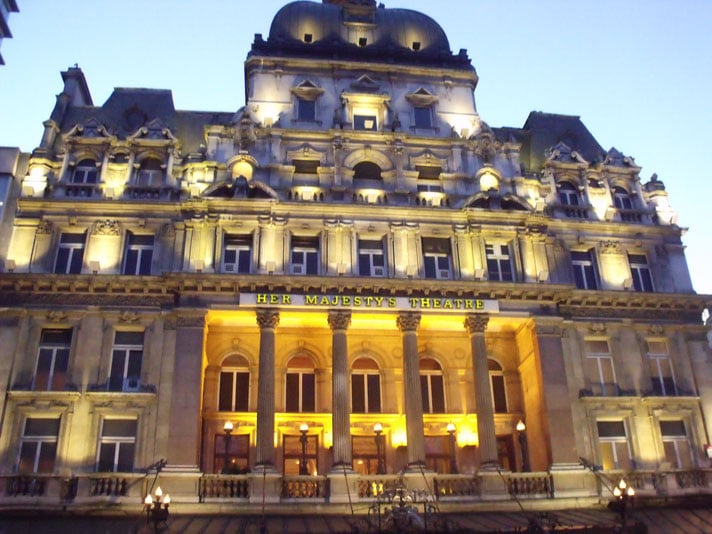
Elliott Brown from Birmingham, United Kingdom [CC BY 2.0], via Wikimedia Commons
7. 1994 – Karamay Friendship Theatre, Xianjing, China – Another Chinese theatre fire
Karamay is a wealthy city in the north of the Xinjiang region, its wealth stemming from the oil fields found there in the 1950s.
If the Canton theatre fire disaster was known for the huge loss of life, the Karamay Friendship Theatre tragedy is remembered for the horrific decision to allow children to die while local party officials filed to safety.
In a case of tragic irony, the 500 children taken to the performance had earned their place for their outstanding academic performance. The prestigious show was also attended by around 20 local party officials. It is thought that a spotlight short-circuited, setting the stage curtains alight.
Whatever the initial cause, it is alleged that a woman instructed the children to remain seated while the party officials left the theatre. In those vital few minutes, the theatre became an inferno and claimed the lives of 288 children and a further 36 adults, mainly teachers.
The remains of the Karamay Friendship Theatre can be seen on the edge of The People’s Square. They have been whitewashed and many people accuse the authorities of trying to do the same with the tragedy itself.
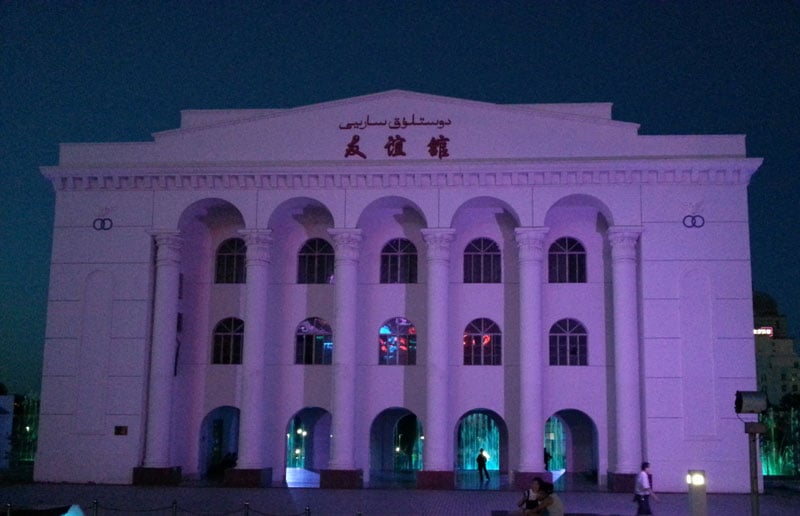
Rart [CC BY-SA 4.0], via Wikimedia Commons
8. 1996 – Metropolitan Opera House, New York – Two tragic deaths (and Macbeth is involved again)
The Metropolitan Opera House moved from Broadway to its current home on Lincoln Square, New York, in 1966. It has a capacity of 3,975.
The Met, as it is affectionately known, has had its share of tragedies with two standing out due to the uncanny circumstances around them.
The first involves a Bulgarian-born American singer Bantcho Bantchevsky. On Saturday January 23rd, 1988, Bantchevsky was attending a live broadcast matinee of Giuseppe Verde’s Macbeth and took up his preferred position in the balcony. During the intermission between the second and third acts, he sat on the balcony railings before throwing himself backwards on to the seats below, committing suicide.
The second tragedy involved the tenor Richard Versalle. On 5th January 1996, while playing the role of the law clerk Vitek in Janacek’s The Makropulos Case, Versalle suffered a heart attack while half way up a six meter ladder and fell to the stage. He was pronounced dead on arrival at hospital. Ironically, the last line Versalle had sung was, ‘Too bad, you can only live so long.’
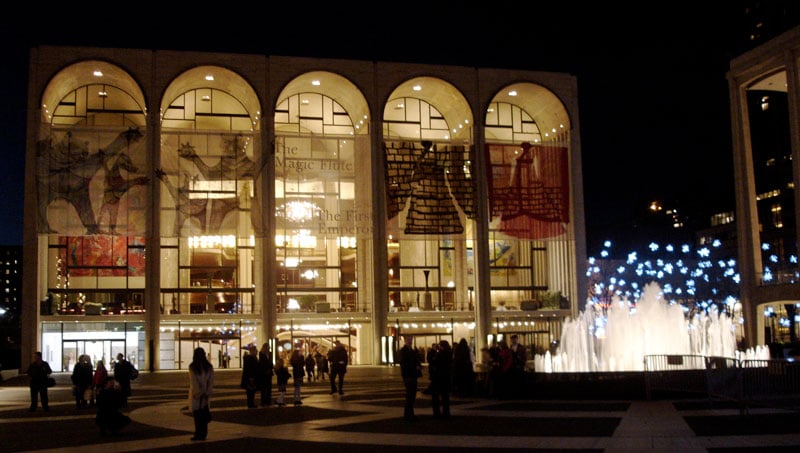
9. 2012 – Cinemark Century 16, Aurora, Colorado – Worst mass shooting in US history
Before the recent shootings in Las Vegas and Florida, James Eagan Holmes’ murderous rampage at the Cinemark Century 16 multiplex in Aurora, Colorado was the worst mass shooting in US history, killing 12, including a six year-old girl, and wounding 70, many in life-changing ways.
The attack happened on July 20th 2012, half an hour into a midnight screening of The Dark Knight Rises. Holmes had stashed an arsenal of weapons in his car which was parked in the lot just outside the theatre. Propping the door open, he went to his vehicle, dressed himself in black and equipped himself with body protection, canisters of tear gas, a pump-action shotgun, a semi-automatic rifle and a handgun. He then re-entered the theatre, threw tear gas and began shooting at the audience before being arrested by police. He was eventually given multiple life sentences for murder and attempted murder.
The multiplex was closed for around six months before being re-opened with a 40 minute remembrance ceremony on January 17th 2013. The two theatres where the shootings took place have been combined into an XD digital viewing room and the venue is now known as the Century Aurora & XD.
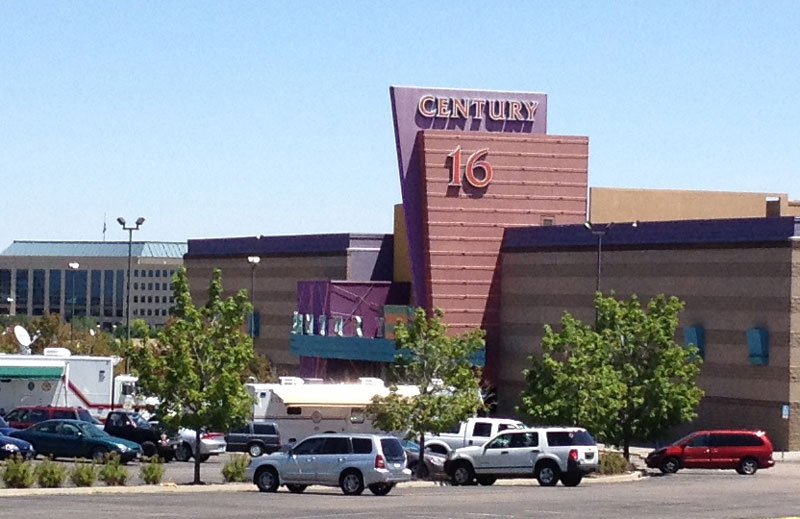
Algr [CC BY-SA 3.0], via Wikimedia Commons

